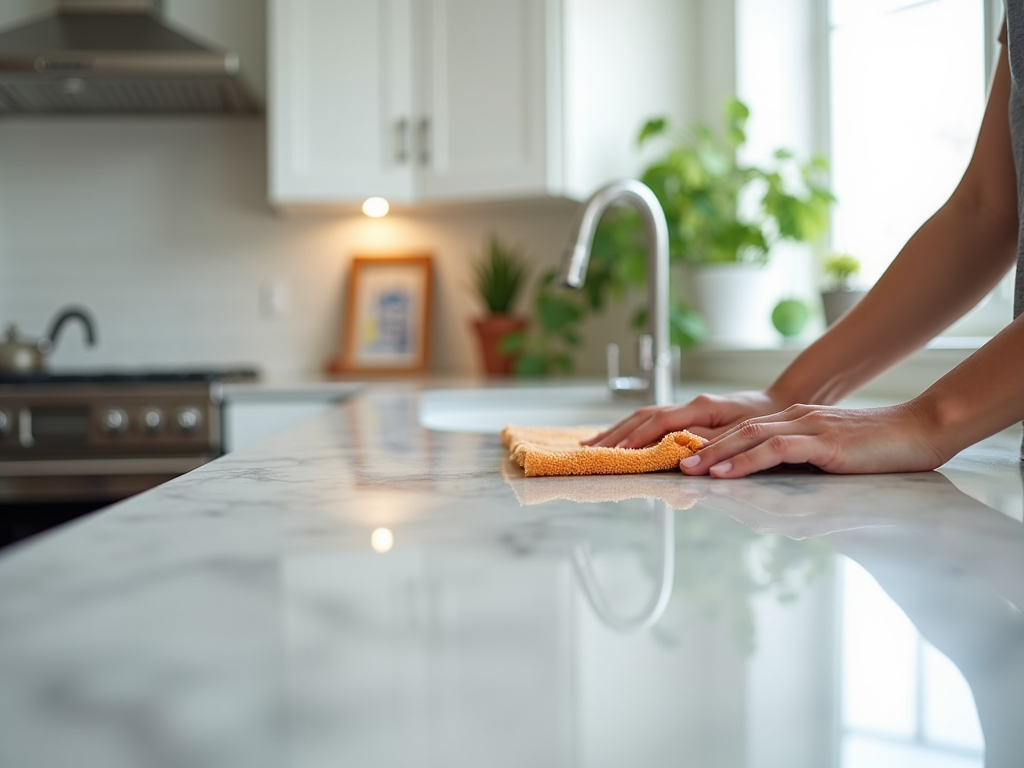
How to Clean Every Type of Countertop: Marble, Quartz, Butcher Block, and More
Keeping countertops sparkling clean is essential for both aesthetic appeal and maintaining a hygienic kitchen environment. Each type of countertop material requires specific cleaning methods to preserve its integrity and beauty. Whether you’re dealing with the luxurious marble, the durable quartz, the rustic butcher block, or other materials, understanding the proper cleaning techniques is key.
Marble Countertops

Marble is known for its elegant and luxurious appearance, but it’s also one of the most porous and delicate countertop materials. Due to its susceptibility to staining and etching, it requires gentle cleaning and consistent maintenance. Start by wiping any spills immediately with a soft cloth to prevent stains. For everyday cleaning, use a solution of warm water and mild dish soap.
Avoid acidic or abrasive cleaners, as they can damage marble’s surface. For a deeper clean, consider mixing baking soda and water to form a paste. Apply it gently to the surface, let it sit for a few hours, and then rinse with warm water. To maintain marble’s shine, use a commercial stone polish designed for marble surfaces.
Quartz Countertops
Quartz is a popular choice for kitchen countertops due to its smooth, non-porous surface and resistance to staining. Unlike natural stones, quartz is less likely to harbor bacteria, making it relatively low-maintenance. For daily cleaning, simply use a gentle dishwashing liquid mixed with warm water, and wipe the surface with a soft cloth.
To tackle tougher spots or dried spills, make a paste with baking soda and water, apply it to the stain, let it sit, and then scrub gently. Avoid harsh chemicals or scouring pads to prevent scratching or dulling the surface. To enhance quartz’s natural luster, you can occasionally use a non-abrasive polish specifically designed for quartz counters.
Butcher Block Countertops
Butcher block countertops bring a warm, natural feel to any kitchen, but they do require proper care to prevent damage and maintain their appearance. These wooden countertops can easily absorb moisture and trap bacteria, so regular cleaning is essential. After each use, wipe down the surface with a combination of water and mild dish soap.
For deeper cleaning and to remove odors, sprinkle the surface with coarse salt, then use a lemon half to scrub the block. This natural method both cleans and deodorizes the top. It’s important to season butcher block countertops regularly with mineral oil to repel moisture and maintain the wood. Apply the oil with a clean cloth, let it soak in, and wipe off any excess.
- Avoid cutting directly on the surface to preserve its smoothness.
- Use trivets and hot pads to protect it from heat damage.
- Consider re-sanding the surface if it becomes heavily stained or scratched.
Granite Countertops
Granite is yet another popular choice due to its stunning appearance and durability. Despite its tough exterior, it must be sealed regularly to prevent stains. For daily cleaning, use a gentle cloth with warm water and a pH-balanced cleaner to avoid stripping away the sealant.
To remove stubborn stains, create a paste using baking soda and water. Apply it to the stained area, cover it with plastic wrap, and let it sit overnight before rinsing. In order to avoid scratches, refrain from using abrasive materials and tools. Regular sealing—at least once a year—will help maintain its beauty and resistance to staining.
Laminate Countertops
Laminate countertops are perhaps the easiest to maintain due to their affordable, durable, and moisture-resistant nature. For general upkeep, wipe them down with a damp cloth and a gentle detergent. However, for deeper cleaning, a solution of baking soda and water can work wonders on persistent stains.
While laminate is resistant to many types of damage, it can be scratched or burnt easily. Always use cutting boards and trivets to protect the surface. Additionally, refrain from using bleach or abrasive cleaners, as they can cause discoloration. Armed with these tips, laminate countertops can remain vibrant and long-lasting with minimal effort.
Conclusion
Maintaining your countertops involves understanding the specific needs of each material. From the delicate nature of marble to the robustness of laminate, each requires tailored cleaning techniques to ensure longevity and maintain an attractive appearance. As versatile as they are, these materials demand a little attention and care to keep your kitchen both beautiful and functional.
Frequently Asked Questions
- Can I use vinegar on marble countertops? No, vinegar is acidic and can cause etching on marble surfaces. It’s best to use a pH-neutral cleaner specifically designed for stone.
- How often should I seal my granite countertops? It is recommended to seal granite countertops once a year or as soon as water no longer beads on the surface.
- Can I cut directly on a quartz countertop? Although quartz is durable, it’s advisable to use a cutting board to avoid dulling your knives and potential scratches.
- What can I do to remove minor scratches from butcher block countertops? For minor scratches, lightly sand the affected area, then apply mineral oil to restore the surface.
- Are laminate countertops heat resistant? While laminate is moisture-resistant, it is not heat-resistant. Always use trivets or pads underneath hot dishes to prevent damage.

How to Deep Clean Your Bathroom in 10 Steps
Deep cleaning your bathroom can seem like a daunting task, but it’s essential for maintaining a hygienic and pleasant space. By breaking it down into manageable steps, you can effectively tackle this chore and enjoy a sparkling clean bathroom. This article will guide you through the process, ensuring you don’t miss any critical areas while making the job more efficient and even enjoyable.
Gather Your Supplies

Before you start scrubbing away, it’s crucial to gather all the necessary supplies. Having everything on hand from the beginning will save you time and frustration. Some of the key items you’ll need include cleaning agents like bleach or vinegar, specialized products for bathroom surfaces, microfiber cloths, scrub brushes, and a mop. You might also want a caddy to carry your supplies easily from one corner to the other. Consider making a checklist to ensure you have everything you need. Stocking up on the right tools can make the job feel less overwhelming and more manageable.
Declutter and Organize

Clearing out the clutter is the next vital step. Begin by removing all items from your bathroom surfaces, including toiletries, shower products, and decorative items. This allows you to clean every inch without obstacles. Take this opportunity to toss out empty containers, expired products, and anything you no longer use. Organize the remaining items efficiently, using baskets or containers to keep them tidy and accessible. This not only helps in cleaning but also contributes to a more organized, less cluttered living space overall.
Focus on the Shower and Tub
The shower and tub are often the focal points of a deep clean due to soap scum and mildew buildup. Apply a powerful bathroom cleaner or a homemade solution like vinegar and baking soda to tackle tough stains. Allow the cleaner to sit for a few minutes to break down dirt and grime. Then scrub using a brush specifically designed for scrubbing tub and tile surfaces. Don’t forget to clean the showerhead and the tub spout, which can also accumulate build-up over time. Rinse everything off with warm water and dry with a towel to prevent water spots.
The toilet is a high-traffic item in your bathroom and requires thorough cleaning. Start by applying toilet bowl cleaner inside the bowl, focusing on the rim and letting it soak in. Use a toilet brush to scrub under the rim and inside the bowl effectively. Simultaneously, use disinfectant wipes or a clean cloth soaked in disinfectant to wipe the toilet seat, lid, and handle. Being thorough in cleaning taps and buttons will also help keep germs at bay. Flush to rinse the bowl cleaner and apply a freshener or deodorizer for a finishing touch.
Sanitize the Sink and Countertops
The sink and countertops often accumulate water spots, toothpaste, and grime. First, clear the area of any remaining items. Apply a suitable cleaner and let it sit for recommended time. Using a scrub brush or cloth, work on stains and deposits, paying special attention to the faucet and around the drain. Rinse the sink thoroughly and dry with a microfiber cloth to prevent streaks. Organize the countertop items neatly, only replacing what’s necessary. Remember to clean areas like the soap dish or toothbrush holder, which often harbor significant bacteria.
Conclusion
Deep cleaning your bathroom doesn’t have to be an overwhelming task. By following these ten methodical steps, you can achieve a cleaner, fresher environment that benefits your household’s health and enhances your home’s appeal. Being systematic in your approach not only ensures thoroughness but also makes the process more efficient. You’ll not only have a sparkling clean bathroom but also a sense of accomplishment that comes with ticking a big chore off your list. Happy cleaning!
Frequently Asked Questions
1. How often should I deep clean my bathroom?
Ideally, you should deep clean your bathroom once a month. This frequency helps in keeping germs at bay and maintaining a-pristine condition.
2. Can I use natural cleaning products?
Yes, natural cleaners like vinegar and baking soda are effective for various bathroom cleaning tasks. They are eco-friendly and safe to use around children and pets.
3. What is the best way to prevent mold in the bathroom?
To prevent mold, ensure the bathroom is well-ventilated. Use a dehumidifier if necessary and clean regularly to prevent mold growth.
4. How can I get rid of tough stains on tiles?
For tough stains, use a paste made of baking soda and water. Apply to the stain, leave it for a few minutes, then scrub and rinse.
5. What cleaning supplies do I absolutely need?
The essentials include a toilet cleaner, a bathroom surface cleaner, scrub brushes, microfiber cloths, and a mop. These cover the majority of cleaning tasks in your bathroom.

How to Clean Rugs and Carpets
Keeping rugs and carpets clean not only enhances the beauty of your home but also helps maintain a healthy environment. Regular cleaning is crucial to remove dirt, allergens, and stains that can accumulate over time. This article will guide you through the essential steps for effective rug and carpet cleaning, from spot treatments to deep cleaning techniques, ensuring your floors remain fresh and inviting.
Gather the Necessary Cleaning Supplies
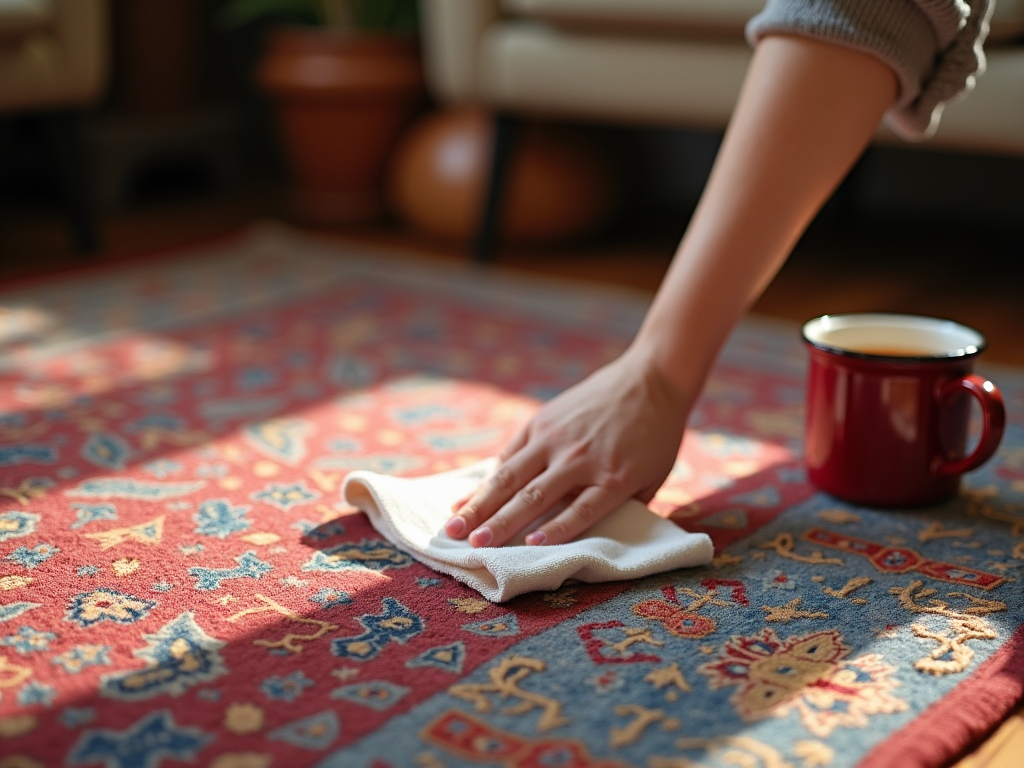
Before you begin, ensure you have all the necessary tools and supplies for cleaning your rugs and carpets. This preparation will save you time and help you achieve optimal results. A well-equipped cleaning kit typically includes:
- Vacuum cleaner with attachments
- Clean white cloths or paper towels
- Mild detergents or commercial carpet cleaners
- Soft-bristle brush or broom
- Bucket of warm water
- Spray bottle
By having these items on hand, you can tackle different types of stains and maintain your carpets and rugs with ease.
Vacuuming: The First Line of Defense

Vacuuming is the most straightforward method to keep your rugs and carpets clean on a day-to-day basis. Regular vacuuming helps remove surface dirt, dust, and debris, prolonging the life of your carpets. Aim to vacuum high-traffic areas at least once a week, while less-frequented spaces can be vacuumed biweekly. In addition to standard vacuuming, use attachments to clean edges and corners where dirt often accumulates.
When vacuuming, move the cleaner in overlapping rows to ensure comprehensive coverage. For high-pile or shag carpets, adjust the vacuum height setting and use slower motions to allow deeper soil extraction. Consistent vacuuming not only keeps your rugs free from dust but also restores their fibers and maintains a fresh appearance.
Spot Cleaning Stains and Spills
Inevitable stains and spills can be addressed efficiently through spot cleaning. Act quickly to prevent stains from setting into the fibers of your carpets or rugs. Begin by blotting the stain with a clean, dry cloth, working from the outside edges toward the center to avoid spreading it.
Mix a mild detergent with warm water, or use a commercial carpet cleaner, and apply it to the stained area. Use a soft-bristle brush to gently work the solution into the fibers, then blot with a clean cloth to lift the stain. Rinse the treated area with water, ensuring no cleaning residue is left behind, as it can attract future dirt.
- Identify the type of stain.
- Blot (do not rub) the affected area with a clean cloth.
- Apply a small amount of the cleaning solution.
- Gently scrub with a brush.
- Blot again to absorb moisture and the stain.
Maintaining prompt attention to spills and stains will keep your carpets and rugs looking their best over time.
While regular vacuuming and spot cleaning are effective, deep cleaning is essential for removing embedded dirt and allergens. This process is more intensive and can be done with a rented carpet cleaner or by hiring professional services. If you opt for DIY deep cleaning, make sure to follow the manufacturer’s instructions for using the carpet cleaner correctly.
Start by vacuuming the entire area to remove loose dirt. Then, follow the carpet cleaner’s directions to mix the cleaning solution, ensuring you cover the room systematically. Deep cleaning not only refreshes your carpets and rugs but also enhances indoor air quality by removing pollutants trapped within the fibers.
Maintaining Rugs and Carpets Over Time
Consistent maintenance is key to extending the life and appearance of your rugs and carpets. Besides regular vacuuming and stain removal, consider these preventive measures:
- Use area rugs or runners in high-traffic zones to minimize wear.
- Implement a no-shoe policy indoors to reduce dirt tracking.
- Rotate rugs periodically to ensure even wear.
- Trim snags and pulls to prevent extensive damage.
By incorporating these practices into your routine, you can maintain your rugs and carpets in pristine condition, ensuring they remain a vibrant part of your home decor.
Conclusion
Cleaning rugs and carpets effectively involves a combination of regular vacuuming, prompt stain treatment, and occasional deep cleaning. By using the right equipment and methods, you can preserve the beauty and longevity of your floor coverings, creating a healthier and more aesthetically pleasing home environment. Adopting preventive measures will further help in maintaining your carpets, offering you peace of mind and more time to enjoy your living spaces.
Frequently Asked Questions
How often should I deep clean my carpets?
Deep cleaning is recommended every 12 to 18 months, or more frequently if you have pets, allergies, or heavy foot traffic.
Can I use household products for cleaning carpet stains?
Yes, mild household products like vinegar and baking soda can be used for some stains. Always test on a small area first to avoid damage.
What if my carpet smells after cleaning?
This may occur if the carpet was not dried thoroughly. Ensure proper ventilation or use fans to speed up drying to prevent musty odors.
Are professional carpet cleaning services worth it?
Professional cleaning can be beneficial, especially for stubborn stains or large areas. It ensures thorough cleaning with specialized equipment.
Is vacuuming sufficient for carpet maintenance?
While vacuuming is essential, it’s not enough alone. Spot cleaning and periodic deep cleaning are also necessary for comprehensive care.
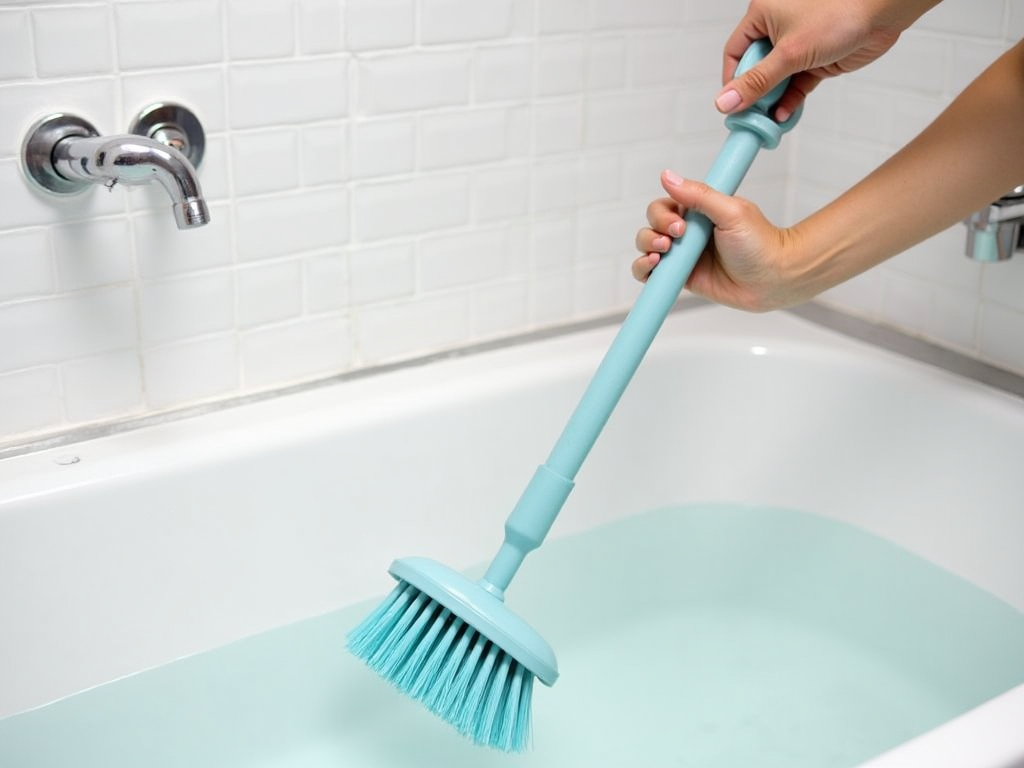
How to Clean a Tub Without Hurting Your Back
Cleaning the bathtub is a task most of us would rather skip, especially when the risk of back pain looms large. However, it is possible to keep your tub sparkling clean without straining your muscles or causing injury. By adopting the right techniques and tools, you can make this chore much less unpleasant and more efficient. This article will guide you through the steps to clean your tub effectively while protecting your back.
Use the Right Tools
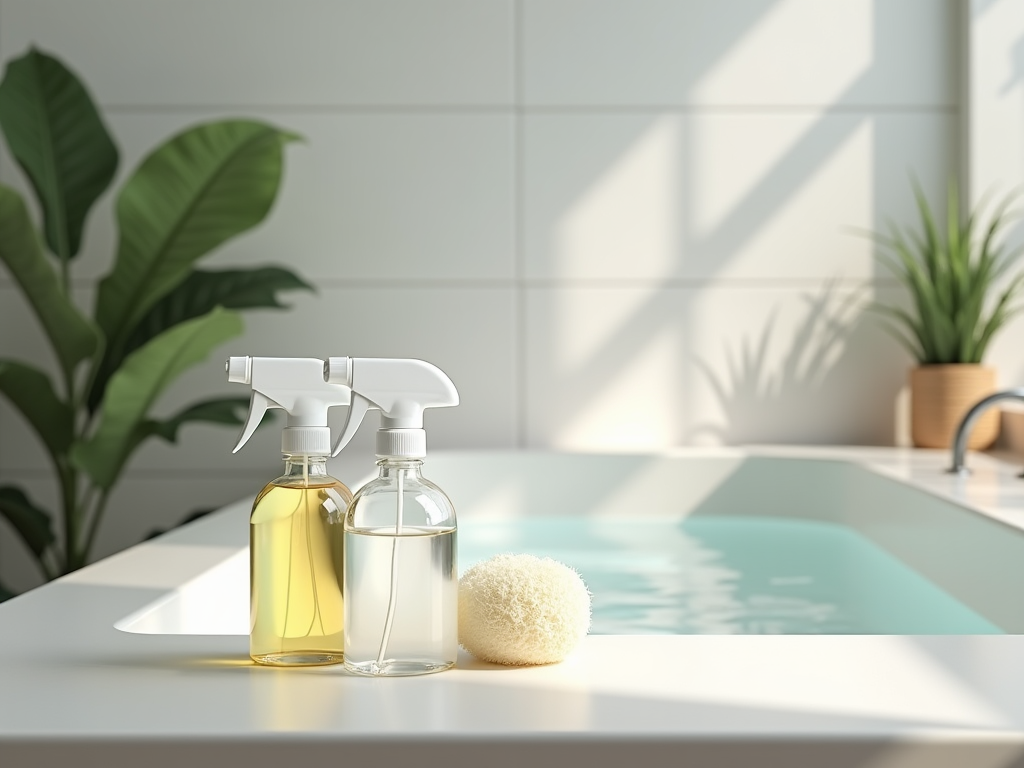
Investing in the right cleaning tools can drastically reduce the strain on your back. Long-handled scrubbing brushes are a game-changer, allowing you to reach all areas of your tub without bending over excessively. A telescopic handle that can be adjusted to accommodate different heights is ideal, ensuring that you clean with a straight back. Additionally, consider using a mop with a scrubbing head that can help manage even the toughest stains from a distance. This way, you maintain an ergonomic posture that prevents fatigue and discomfort.
Adopt Proper Technique

Technique matters when it comes to cleaning your tub efficiently without hurting your back. Begin by adopting a stance that spreads your weight evenly. This can be achieved by bending your knees slightly and keeping your back straight. Shift your weight from one leg to the other rather than bending or overreaching. Remember to engage your core muscles to provide additional support for your back. By implementing these strategies, you minimize the risk of back injuries and enhance cleaning effectiveness. Ensure to take frequent breaks to prevent muscle strain, particularly if your bath requires intensive cleaning.
Avoid harsh chemicals that can not only be tough on grime but also harsh on you. Opt for homemade solutions that are effective and easy on your back. A simple mixture involves:
- 1 cup of vinegar
- 1 cup of dish soap
- 1⁄2 cup of baking soda
Mix these ingredients together and apply them with your long-handled scrub brush. The combination helps to break down soap scum and mineral deposits effortlessly. Leave the solution on for a few minutes before scrubbing, allowing it to dissolve dirt naturally. Homemade solutions are not only budget-friendly but also reduce the need for aggressive scrubbing, making cleaning less taxing on your back.
Incorporate Regular Maintenance
Preventative measures are crucial for maintaining a clean bathtub without intensive cleaning sessions that strain your back. Consider setting a regular cleaning schedule that involves light, manageable tasks. Wiping down your tub with a microfiber cloth after each use can prevent the build-up of soap scum and grime. Additionally, using a squeegee to remove excess water reduces moisture accumulation, preventing mold and mildew growth. By keeping up with these small tasks regularly, deep cleaning sessions can be cut down significantly, sparing your back from unnecessary strain.
Utilize Comfy Accessories
While cleaning your tub, accessories designed for comfort and efficiency can make a significant difference. Kneeling pads provide essential cushioning for your knees, making any bending more comfortable. Anti-slip shoes give you a sturdy footing while you work, preventing slips and falls. Also, consider sharp tools or scrapers with ergonomic grips that reduce hand strain and overall effort. Tools designed with comfort in mind help maintain good posture, ensuring your back remains supported throughout the cleaning process.
Conclusion
Cleaning a bathtub doesn’t have to result in back pain. By using the right tools, maintaining proper posture, and employing less strenuous techniques such as regular upkeep, you can efficiently keep your tub pristine without discomfort. Homemade cleaners further simplify the cleaning process, reducing the need for harsh scrubbing. Adopt these strategies, and you’ll transform this chore into a manageable, pain-free task.
Frequently Asked Questions
1. What is the best way to clean a bathtub with minimal bending?
The best way to clean a bathtub with minimal bending is by using long-handled scrubbers and telescopic tools that allow you to reach all areas comfortably, thus reducing strain on your back.
2. How often should I clean my bathtub to avoid long cleaning sessions?
It’s advisable to clean your bathtub lightly after every use. Simply wiping down the surfaces and removing excess water can prevent grime build-up, reducing the need for more intensive cleanings.
3. Can homemade cleaning solutions damage my bathtub?
No, most homemade cleaning solutions, such as vinegar, baking soda, and dish soap, are gentle yet effective. However, it’s always good to test a small area first to ensure compatibility with your tub’s material.
4. Are there any techniques to support my back while cleaning?
Yes, maintaining a straight back and bending your knees slightly can provide better support. Also, engage your core muscles and shift your weight evenly to prevent overstraining any muscle group.
5. What are the best products to use for comfort while cleaning?
Kneeling pads, anti-slip shoes, and ergonomic grip tools can provide additional comfort. These products reduce strain and provide support, making the cleaning process less taxing on your body.

13 Things That Can Make or Break Your Kitchen Remodel
Remodeling your kitchen can be an exciting yet overwhelming venture. The transformation promises a fresh, modern space that caters to your cooking and dining needs, enhancing both functionality and aesthetic appeal. However, certain factors can determine the success of this project. By navigating these 13 potential pitfalls or enhancements, you can ensure your kitchen remodel is a success rather than a regret-filled endeavor.
1. Budget Planning

Without a well-structured budget, a kitchen remodel can quickly spiral out of control financially. Before you start, determine what you can realistically afford, keeping in mind potential unexpected expenses. This planning phase should include research into the cost of materials, labor, and permits. A solid budget acts as a roadmap, ensuring that you don’t overspend or cut corners on important features. Create a detailed ledger of expected costs and keep track of all expenses diligently. You should also allocate around 10-15% of the overall budget for unforeseen contingencies. Ignoring this can lead to halts in your project if costs exceed estimates.
2. Understanding Your Needs and Wants

Distinguishing between your needs and wants will help prevent lavish spending on unnecessary features. It’s imperative to prioritize the essential components first, like durable countertops, cabinetry, and proper lighting. Make a list of must-haves and desirable elements, ranking them in order of importance. Work closely with your contractor or designer to identify which areas offer room for creativity or compromise. By focusing on what truly matters, you avoid future regrets about overlooked essentials. This understanding forms the backbone of your remodeling project, guiding design decisions effectively.
The materials you choose significantly influence both the look and longevity of your kitchen. Consider durability, maintenance requirements, and aesthetics when deciding between materials for countertops, flooring, and cabinetry. Common options include granite, quartz, and laminate for countertops, each offering varying pros and cons. Floors can be designed from tile, hardwood, or vinyl considering foot traffic and spill resistance. Quality materials often translate to higher initial costs, but they are an investment in the kitchen’s longevity and appearance. Making informed choices prevents premature wear and the need for early replacements.
4. Utilizing Space Efficiently
Efficient use of space is crucial in any kitchen, regardless of size. Progressive kitchen designs utilize smart storage solutions such as pull-out pantries, corner carousels, and custom cabinetry that maximize functionality. Consider the “kitchen triangle” principle, which optimizes the placement of the sink, stove, and refrigerator. Every inch should serve a purpose, minimizing clutter and creating a streamlined environment for cooking and entertaining. Engineers and designers can offer advanced solutions for small spaces that maintain utility without sacrificing style. Prioritizing functionality leads to a kitchen that embodies efficiency and ease of movement.
5. The Value of Professional Help
Tackling a kitchen remodel independently might seem cost-effective, but it often results in overlooked details and costly errors. Professional designers and contractors bring expertise and experience, ensuring high standards and compliance with regulations. By hiring professionals, you benefit from their access to quality materials and subcontractors, saving time and reducing stress. Create a shortlist of potential candidates; then conduct interviews, assess portfolios, and check references before making a decision. Quality professionals can turn your visions into reality, preventing technical mishaps and ensuring the remodel is executed to perfection.
- Budget Planning
- Understanding Your Needs and Wants
- Selecting the Right Materials
- Utilizing Space Efficiently
- The Value of Professional Help
Conclusion
Embarking on a kitchen remodel involves a myriad of considerations, but by focusing on these 13 critical areas, you can dramatically enhance the outcome. From meticulous budget planning and need assessment to expert material selection, space utilization, and professional collaboration, each decision contributes to the project’s overall success or failure. A thoughtful approach yields a harmonious kitchen that blends design with functionality, ultimately elevating the heart of your home. Equip yourself with knowledge, and enjoy the transformation of your kitchen space.
Frequently Asked Questions
1. How long does a typical kitchen remodel take?
This depends on the scale of the remodel. Minor updates could take a few weeks, whereas a complete overhaul might span several months.
2. Can I live at home during the kitchen remodel?
Yes, but be prepared for disruptions. Setting up a temporary kitchen and planning meals ahead can alleviate inconveniences.
3. What should be included in a kitchen remodel contract?
Ensure the contract includes timelines, payment schedules, project details, materials specifications, and warranty information.
4. How can I save money on a kitchen remodel?
Prioritize DIY tasks within your skillset, keep existing layouts, and shop smartly for materials and fixtures.
5. Are permits needed for a kitchen remodel?
Some remodel elements require permits, such as structural changes or altering plumbing and electrical systems. Consult local regulations.
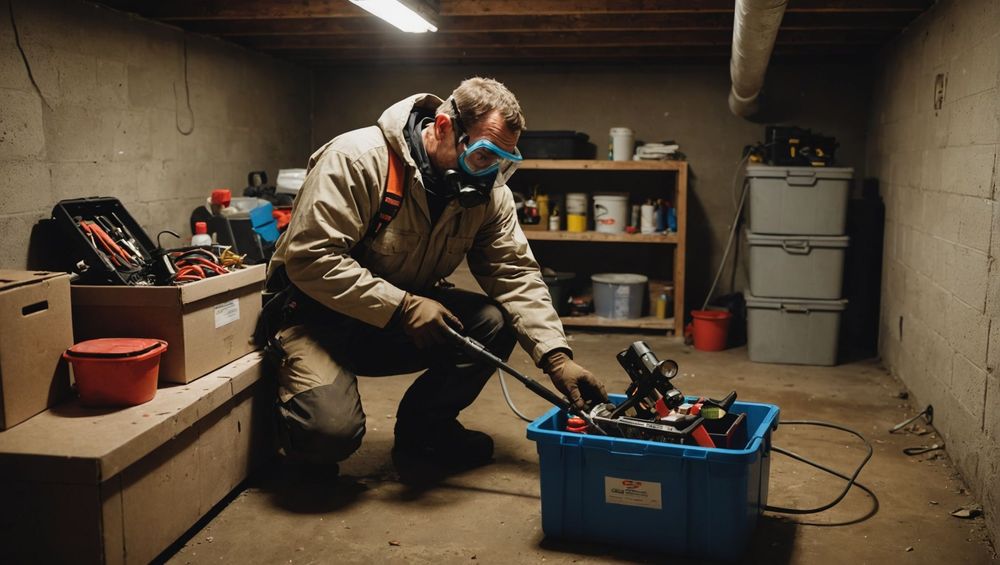
Understanding Cockroach Behaviour for Effective Cockroach Control
Understanding cockroach behavior is crucial for effective pest control. These resilient insects thrive in various environments, adapting their behavior to find food, water, and shelter. By grasping their habits, you can implement better strategies for prevention and extermination. This article explores the behavior of cockroaches, their preferred habitats, what attracts them, and how to effectively manage and control their populations.
Cockroach Habitat and Preference
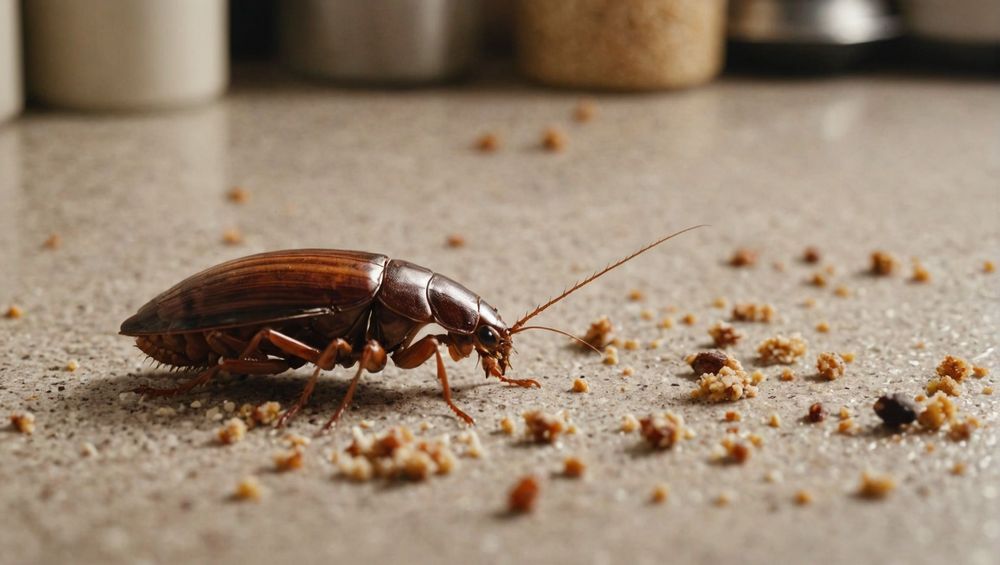
Cockroaches are incredibly adaptable creatures, often finding refuge in human dwellings. They prefer warm, dark, and humid environments that mimic their natural habitats. Key places to find cockroaches include:
- Kitchen areas, particularly under sinks and behind appliances.
- Bathrooms, especially around plumbing fixtures.
- Basements and garages, which provide secluded environments.
- Cracks and crevices in walls and furniture.
- Overflowed trash bins or spills left uncleaned.
This preference for hiding places makes it essential to regularly check and maintain these areas to prevent infestations. The more you understand their chosen habitats, the better equipped you’ll be for effective management.
Feeding Habits of Cockroaches

Cockroaches are omnivorous scavengers, thriving on various food sources. They have a broad diet, allowing them to survive in diverse environments. Their feeding habits include:
- Consuming food remnants left in kitchens and dining areas.
- Feeding on pet food left unattended.
- Consuming paper products, soap, and even dead insects.
- Feeding on the mold found on decaying materials.
- Exploring pantry items, including grains and sugary substances.
This diverse diet emphasizes the importance of maintaining cleanliness in households. Regularly cleaning surfaces and storing food in sealed containers can significantly reduce the likelihood of attracting cockroaches.
Reproductive Habits and Life Cycle
Cockroaches reproduce swiftly, making it crucial to understand their life cycle to implement effective control measures. The typical life cycle involves three stages: egg, nymph, and adult. Key points to note are:
- Female cockroaches produce egg cases (oothecae) that can contain up to 50 eggs each.
- Egg cases are often found in hidden areas, making them hard to detect.
- Once hatched, nymphs undergo multiple molts before reaching adulthood.
- Cockroaches can live for several months, with females living up to a year.
- Early intervention is key in preventing a small problem from becoming a larger infestation.
Being proactive in monitoring for and removing egg cases can significantly lower future population growth, making it an essential aspect of effective cockroach control.
Behavioral Patterns and Activity Times
Cockroaches are nocturnal, meaning they are most active at night when the light is low. Their behavior patterns dictate when and how to effectively manage them, including:
- Setting traps and baits during the evening to maximize effectiveness.
- Observing signs of their presence (like droppings) early in the day.
- Limiting food and water availability at night by securely storing food containers.
- Reducing clutter and hiding spots during the day to prevent nesting.
- Utilizing integrated pest management approaches that consider their behavioral habits.
By aligning your control strategies with their natural behaviors, you can more effectively reduce populations in your living spaces.
Effective Strategies for Cockroach Control
Understanding cockroach behavior allows for the development of effective control strategies. Here are some essential methods:
- Maintain cleanliness: Regularly clean kitchen surfaces, bathtubs, and basements.
- Seal entry points: Use caulk or appropriate sealants to close gaps around doors, windows, and pipes.
- Use bait traps: Place food-based bait traps in high-traffic areas.
- Employ professional pest control: If the infestation is severe, consider hiring experts who can utilize targeted methods.
- Regular monitoring: Keep an eye on potential signs of resurgence after treatments.
Implementing these strategies can create a hostile environment for cockroaches, thus reducing their chances of survival and reproduction.
Conclusion
Understanding cockroach behavior is a cornerstone for effective pest control. By recognizing their preferences, feeding habits, and reproductive cycles, you can devise effective strategies to manage these pests. Consistent monitoring and cleanliness are critical in discouraging infestations. Remember, if the problem persists, consulting professional pest control services may be necessary for a long-term solution.
FAQ
1. What attracts cockroaches to my home?
Cockroaches are attracted to food sources, warmth, and water. Leaving food out, poor sanitation, and water leaks make your home appealing to them.
2. How can I tell if I have a cockroach infestation?
Signs of an infestation include droppings, egg cases, a musty odor, and sightings of cockroaches themselves, primarily at night.
3. Is it safe to use DIY pest control methods?
Many DIY methods can be safe and effective, but caution is necessary. Always read product labels and consider the safety of pets and children.
4. How long do cockroaches live?
Cockroaches can live for several months, with adults, particularly females, sometimes surviving up to a year depending on the species and conditions.
5. When should I call a pest control professional?
If you notice repeated signs of a cockroach infestation, despite your best efforts, it may be time to seek professional intervention for effective eradication.
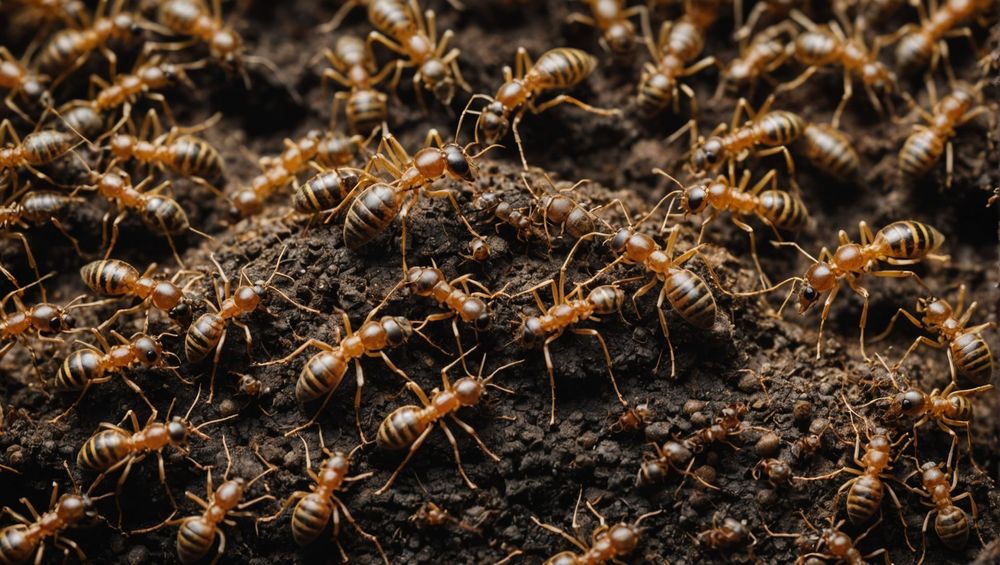
Interesting Facts About Ants That You’ve Never Heard Of
Ants are fascinating creatures that display remarkable behaviors and traits not commonly known to the average person. These tiny insects, which number in the trillions on Earth, exhibit a variety of unique characteristics that contribute to their success as a species. From their complex social systems and communication methods to their impressive strength and even agricultural practices, ants are much more than just garden pests. In this article, we will explore some intriguing facts about ants, unveiling the aspects of their lives that you may not have heard of before.
1. Ants Have Their Own Form of Agriculture

One of the most interesting facts about ants is their agricultural capabilities, which mirror human practices in some ways. Certain species of ants, especially leafcutter ants, engage in systematic farming. They cut leaves and bring them back to their colonies, where the leaves are used to cultivate a special type of fungus that serves as their primary food source. This relationship showcases a complex form of mutualism where both the ants and the fungus benefit from each other’s presence.
Here are some essential details about ant agriculture:
- Leaf Collection: Leafcutter ants meticulously select and cut leaves, which they bring back to their nests.
- Fungus Cultivation: The leaves are not eaten directly; instead, they are used to grow a specific fungus that the ants consume.
- Waste Management: Ants even manage their waste carefully to avoid contaminating the fungus, demonstrating sophisticated understanding.
- Significant Labor Division: There is a clear division of labor among workers, soldiers, and foragers within the ant colony.
- Adaptation: Some species have even adapted their farming techniques based on environmental changes, showcasing their resilience.
2. Ants Communicate in Surprising Ways
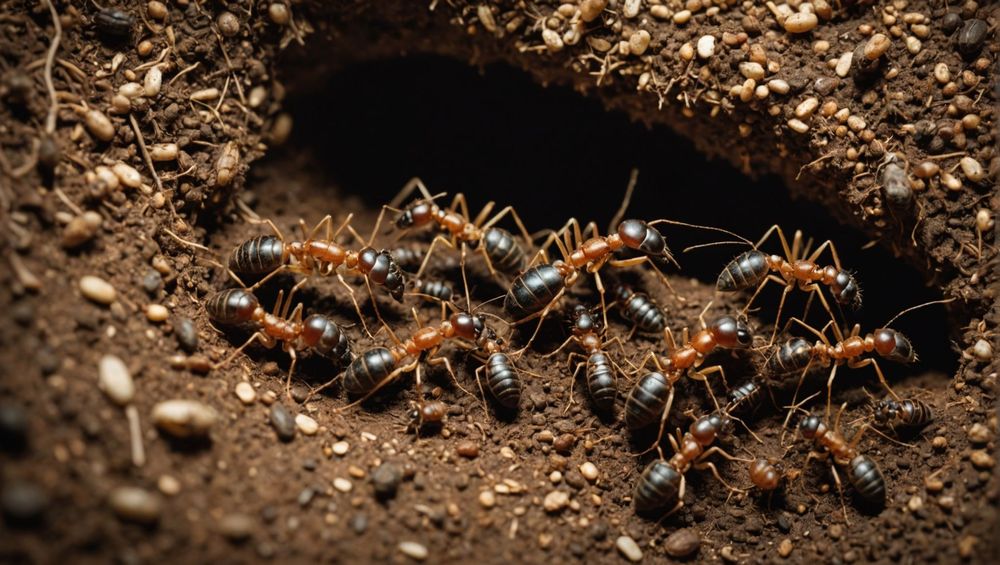
Ants are social insects that rely heavily on communication for colony success. Unlike humans who predominantly use vocal sounds or body language, ants utilize a range of pheromones, which are chemical signals that convey information. These pheromones can indicate a diversity of messages, including the location of food, warnings about danger, or the identification of other ants.
Furthermore, ants also engage in a technique called “tandem running.” This method involves one ant leading another to a food source, physically guiding it while communicating essential cues along the way. This combination of chemical signals and physical interactions highlights the intricate social dynamics of ant life, showcasing their adaptability and intelligence.
3. Ants Are Incredible Builders
Structurally, some ant species are known for their impressive engineering skills. The architecture of ant colonies is not only complex but also astonishingly efficient. Ants build their nests underground, where they create vast networks of tunnels and chambers. These nests can vary greatly in size and structure, depending on the ant species and environmental factors.
Some of the amazing engineering feats include:
- Chambers: Ants create specialized chambers for nurseries, food storage, and even fungus cultivation.
- Ventilation Systems: The tunnels and chambers often feature intricate ventilation systems that regulate airflow and moisture levels.
- Protection: Many nests are designed for defense against predators, showcasing their protective instincts.
- Temperature Control: Ants manipulate tunnel orientation to regulate internal temperature, ensuring it remains stable for their needs.
4. Incredible Strength and Resilience
It might surprise you to learn that ants are incredibly strong for their size. Some species can lift objects that are up to 50 times their body weight! This strength comes from their unique body structure and muscle arrangement, allowing them to perform tasks far beyond what one might expect from such small creatures.
Ants are also resilient: they can survive under extreme conditions. For instance, certain species are known to survive flooding by forming rafts with their bodies, ensuring the survival of their colony. This ability to adapt and endure harsh environments is a testament to their evolutionary success, allowing them to thrive in diverse habitats across the globe.
5. The Ant Queen’s Lifespan
When it comes to ant colonies, the queen ant plays a crucial role and boasts an impressive lifespan. Depending on the species, a queen can live for several years, even up to three decades in some cases! This longevity is significantly longer than worker ants, which typically live just a few months to a year at most. The queen’s primary function is reproduction, laying thousands of eggs throughout her lifetime to ensure the survival of the colony.
Interestingly, the queen is nurtured and protected by worker ants, who attend to her needs entirely. This hierarchical structure is essential for the colony’s growth and sustainability, establishing a balance between generations within ant societies.
Conclusion
Ants embody a world of fascinating traits and behaviours that demonstrate their complex roles in nature. From their agricultural practices and unique communication methods to their exceptional strength and intricate colonies, ants are more than just simple insects. Their adaptability, resilience, and social structures serve as powerful reminders of the wonders of the natural world. As we continue to study these tiny giants, there’s no telling what new insights we might discover about their lives and environments in the future.
FAQ
1. How many species of ants are there?
There are over 12,000 known species of ants, with estimates suggesting that there could be as many as 20,000 species worldwide.
2. Can ants recognize different members of their colony?
Yes, ants can recognize each other through pheromones and unique species-specific chemical signatures, which help them differentiate between colony members and outsiders.
3. Why do ants form large colonies?
Ants form large colonies as a survival strategy. Working together allows them to efficiently gather food, care for their young, and defend against predators, increasing their chances of survival.
4. Do ants sleep?
Ants do not sleep in the same way humans do, but they do have periods of rest. Some studies suggest ants go through short cycles of inactivity, which could be considered a form of light sleep.
5. What do ants eat?
Ants are omnivorous; their diet varies based on species. They generally feed on plant material, nectar, seeds, fungi, and even small insects. Some ant species also gather honeydew produced by aphids.
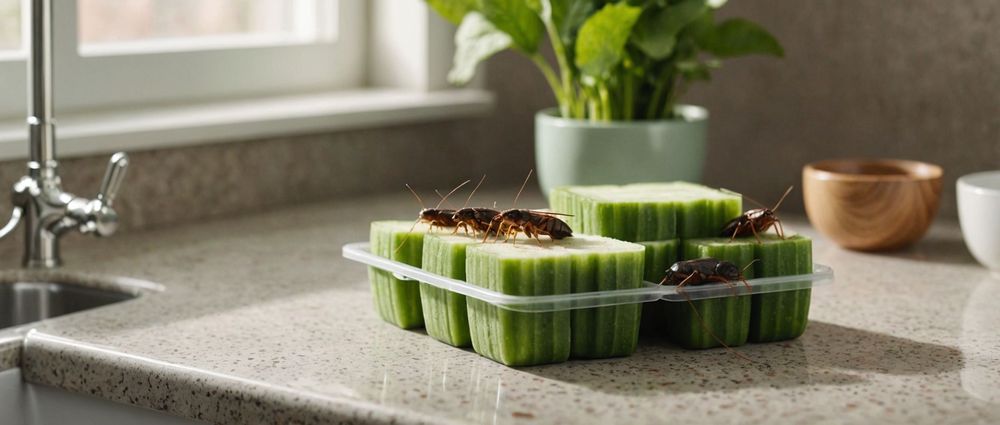
Beyond Bug Spray: Eco-Friendly Cockroach Control Methods
Cockroaches are notorious pests that can invade our homes, but resorting to traditional bug sprays may not be the best solution for eco-conscious homeowners. There are effective and environmentally-friendly methods to keep these unwanted guests at bay. This article will explore sustainable cockroach control strategies that minimize harm to the ecosystem while maintaining a pest-free living space.
Understanding Cockroach Behavior
To combat cockroaches effectively, it is essential to understand their behavior and habitat preferences. Cockroaches thrive in warm, moist environments and are often found in kitchens and bathrooms. They are nocturnal creatures that prefer dark places, making it crucial to identify and eliminate potential breeding grounds. Understanding their preferences helps in formulating an eco-friendly pest control strategy. Here are some key aspects of cockroach behavior:
- They are attracted to food residues, particularly sugary and starchy substances.
- Cockroaches can reproduce rapidly, with a single female producing hundreds of offspring in her lifespan.
- They are capable of surviving for weeks without food but only a few days without water.
- Cockroaches can enter homes through small cracks and crevices, making prevention vital.
- They have a strong sense of smell, which they use to detect food and pheromones from other cockroaches.
Natural Repellents and Traps

Instead of using chemical sprays, several natural repellents can deter cockroaches. These include ingredients that are both effective and safe for homes with children and pets. Essential oils such as peppermint, tea tree, and eucalyptus act as natural repellents. You can create your own cockroach repellent by mixing essential oils with water in a spray bottle. Here are some effective traps you can make at home:
- Soap Water Trap: Mix equal parts of water and liquid soap in a bowl. Place the bowl in areas where cockroaches are frequently seen. The soap suffocates the roaches upon contact.
- Boric Acid Trap: Combine boric acid with sugar and flour to create a bait. Place the mixture in small containers around your home; the sugar attracts the roaches while the boric acid eliminates them.
- DIY Cucumber Trap: Place cucumber slices in areas cockroaches frequent. The odor of cucumber is said to repel roaches.
Preventive Measures for a Cockroach-Free Home

Prevention is one of the best methods for controlling cockroaches. Keeping them from entering your living space reduces the need for reactive measures. Here are several strategies you can implement:
- Seal cracks and crevices around doors, windows, and foundations to block entry points.
- Keep food stored in airtight containers to eliminate food sources.
- Maintain a clean environment by regularly cleaning spills and crumbs.
- Fix any leaks or moisture issues, as these can attract cockroaches.
- Use screens on windows and doors to prevent entry from outside.
Professional Eco-Friendly Pest Control Services
If you’re overwhelmed by a cockroach infestation, consider enlisting the help of eco-friendly pest control services. Many companies now offer green solutions that use non-toxic substances to eliminate pests. These services often utilize integrated pest management (IPM) techniques, which focus on long-term prevention and minimal environmental impact. When choosing a pest control service, look for certified companies that prioritize sustainable methods. They will typically assess your unique situation, create a tailored plan, and provide follow-up visits to ensure cockroach populations remain controlled.
Conclusion
Dealing with cockroaches doesn’t have to involve harmful chemicals or toxic sprays. By understanding their behavior, employing natural repellents, implementing preventive measures, and considering professional eco-friendly services, you can effectively manage cockroach infestations while being kind to the environment. Whether you choose to create homemade traps, seal entry points, or opt for organic pest control services, maintaining a pest-free home is possible without compromising your commitment to ecological well-being.
FAQ
1. Are eco-friendly pest control methods effective against cockroaches?
Yes, eco-friendly pest control methods can be very effective. Natural repellents, traps, and preventative measures can help reduce cockroach populations significantly.
2. How can I prevent cockroaches from entering my home?
To prevent cockroaches from entering your home, seal entry points, maintain cleanliness, store food properly, and fix leaks that create moisture.
3. Is boric acid safe to use in my home?
Boric acid is considered safe for use in homes when used as directed. It is important to keep it out of reach of children and pets and apply it in small, controlled doses.
4. How often should I clean to prevent cockroach infestations?
Regular cleaning is essential. Aim to clean your home at least once a week, focusing on kitchens and bathrooms where food residue is likely to attract cockroaches.
5. What should I do if I still see cockroaches after following eco-friendly methods?
If you continue to see cockroaches after using eco-friendly methods, consider reaching out to a professional pest control service that specializes in sustainable practices for further assistance.

Proven Tips and Tricks to Get Rid of Small or Big Rats at Home
Dealing with a rat infestation can be a daunting task. Whether you are facing small or big rats, effectively eliminating them from your home requires a strategic approach that combines prevention, identification, and removal techniques. In this article, we will explore proven methods to get rid of rats once and for all, ensuring your living space is free from these unwanted pests.
Understanding the Signs of a Rat Infestation
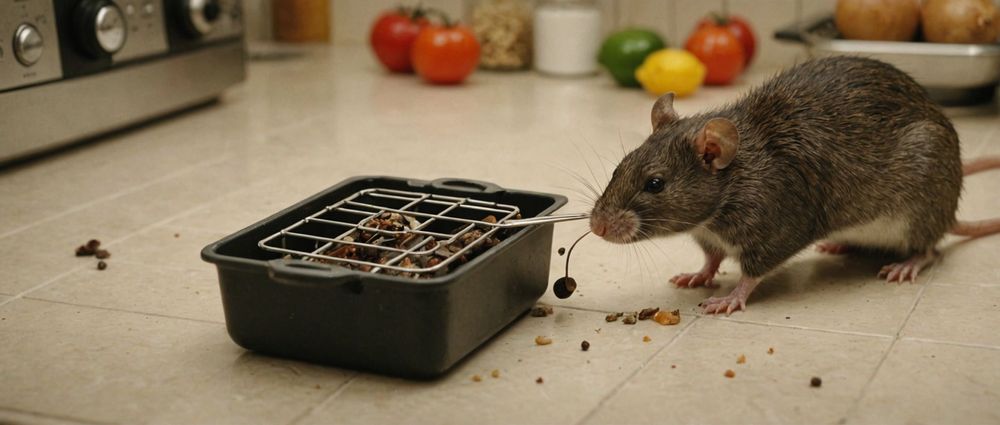
Before you can tackle the problem, it’s essential to recognize the signs of a rat infestation. Rats are clever creatures that often seek shelter in homes to find food, warmth, and safety. Understanding these signs can help you identify an infestation early and take appropriate action. Here are the common indicators:
- Droppings: Small, dark droppings resembling grains of rice are often found near food sources.
- Noises: Scratching or scurrying sounds in walls or ceilings, especially at night, can indicate active rats.
- Gnaw marks: Bite marks on wood, electrical wiring, or food packaging may signal their presence.
- Nesting materials: Shredded paper or fabric found in hidden areas can be a sign of nesting behavior.
- Footprints: In dusty areas, you may notice tracks left by rats, identifiable by their distinctive shape.
Effective Prevention Strategies

Preventing a rat infestation is more effective than trying to eradicate one. This involves several proactive strategies that can keep your home rat-free. Here are essential tips you can implement:
- Seal Entry Points: Inspect your home for holes or cracks, especially in the foundation, walls, and around doors and windows. Use steel wool or caulking to seal these gaps.
- Maintain Cleanliness: Store food in airtight containers and clean up crumbs or spills immediately. Regularly dispose of garbage in sealed bins.
- Declutter: Remove clutter both inside and outside your home that may provide nests for rats, such as piles of debris, old furniture, or overgrown vegetation.
- Remove Outdoor Attractants: Keep pet food and bird seeds stored securely and ensure compost piles are managed properly to avoid attracting rats.
- Consider Natural Deterrents: Use natural repellents such as peppermint oil or cayenne pepper around entry points, as rats dislike strong odors.
Choosing the Right Trap or Poison
If preventive measures fail and you find yourself with a rat problem, you may need to employ traps or poison as part of your strategy. Not all traps work the same, and it’s crucial to choose the right one based on the severity and type of infestation. Here are a few options:
- Snap Traps: These are mechanical traps that kill rats instantly. Place them along walls where you suspect activity.
- Electronic Traps: These traps use batteries to deliver a lethal shock to the rat, offering a quick and humane option.
- Live Catch Traps: These allow you to capture rats without harming them, giving you the chance to release them far from your home.
- Rodenticides: Poison baits should be used with caution, particularly in homes with pets or children. Always follow label instructions.
- Professional Exterminators: If the infestation is severe, seeking professional help can provide tailored solutions to remove rats safely and effectively.
Maintaining an Ongoing Rat Control Plan
Once you are rid of rats, it’s crucial to implement an ongoing maintenance plan to prevent future infestations. Consistency is key in this battle against these pests. Follow these steps:
- Regular Inspections: Routinely check your home and garden for new entry points or signs of rats.
- Continued Sanitation: Keep food areas clean, and ensure outdoor garbage is securely stored.
- Testing Repellents: Reapply natural deterrents periodically to maintain their effectiveness.
- Monitoring Traps: Regularly check traps even when no recent signs of rats have been observed.
- Stay Educated: Keeping informed about new pest control methods and rat behaviors can help you stay one step ahead.
Conclusion
Rats can pose a significant nuisance and potential health risks if allowed to invade your home. By understanding the signs of an infestation, implementing effective prevention strategies, utilizing the right traps or poisons, and maintaining an ongoing control plan, you can eliminate rats and keep your home safe. Remember, the key is vigilance and taking early action to protect your living space from these pesky intruders.
FAQ
1. What attracts rats to my home?
Rats are typically attracted to food, warmth, and shelter. Leaving food out, having clutter, and unsealed garbage can all invite them into your home.
2. How do I know if I have a rat problem?
Look for common signs such as droppings, gnaw marks, unusual noises at night, and signs of nesting material in hidden areas.
3. Can I use homemade traps for rats?
Yes, there are numerous DIY rat trap tutorials available online. However, be cautious with the materials and effectiveness compared to commercial traps.
4. Is it safe to use poison for rats?
Using poison carries risks, especially in homes with pets or children. Always read the labels and consider professional help if unsure.
5. How can I prevent future rat infestations?
Preventing future infestations includes regular cleanliness, sealing entry points, maintaining yard maintenance, and continuing to monitor for signs of rats.
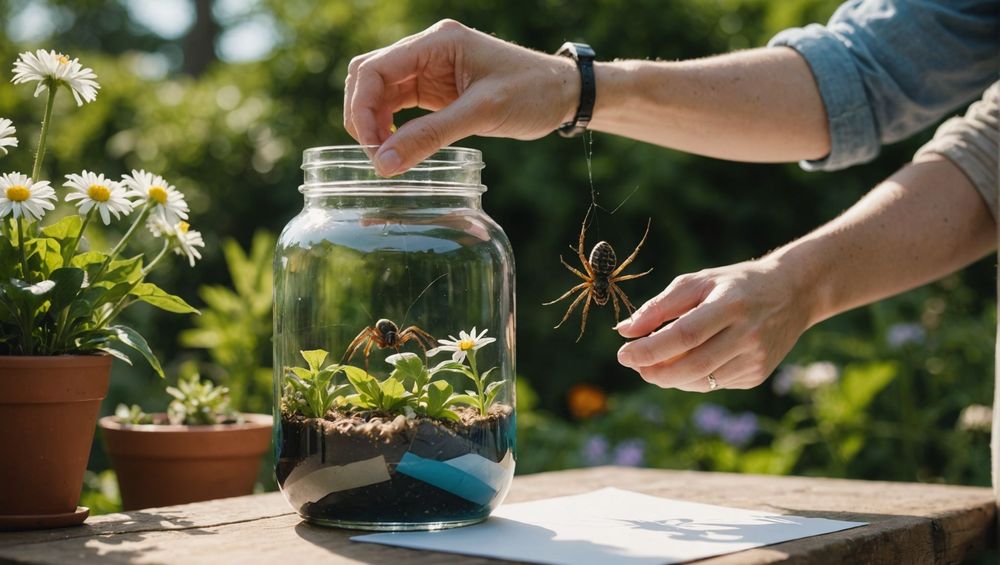
How to Get Rid of Spiders at Home?
Are you tired of sharing your home with unwelcome eight-legged guests? Understanding how to effectively get rid of spiders at home is essential for creating a comfortable living environment. Spiders, while beneficial in controlling pests, can cause distress for many homeowners. Fortunately, several practical methods can help you banish these creatures from your living space. In this article, we will explore natural deterrents, cleaning practices, and preventive measures to keep spiders at bay.
Understanding Why Spiders Come Indoors

Before we can effectively tackle a spider infestation, it’s crucial to understand why these creatures choose to invade our homes. Spiders often seek shelter in search of food, warmth, and moisture. Common attractants include:
- Insects: Spiders prey on insects, so if your home has an abundance of flies, mosquitoes, or ants, it’s likely to attract spiders.
- Warm Environments: As the weather turns colder, spiders may find refuge indoors to escape the harsh conditions outside.
- Damp Areas: Spiders are drawn to moisture, making basements, bathrooms, and kitchens prime spots for their habitation.
By identifying these factors, homeowners can take preventive action to reduce the likelihood of spider incursions in the first place.
Natural Deterrents to Keep Spiders Away
Many households prefer using natural solutions to repel spiders rather than resorting to chemical sprays. Here are some effective natural deterrents that can help:
- Essential Oils: Scents such as peppermint, eucalyptus, and citrus are unpleasant to spiders. Mix a few drops with water in a spray bottle and apply it around windows and doorframes.
- Vinegar: A mixture of equal parts vinegar and water can be sprayed in areas where spiders frequent. This not only repels them but also cleans surfaces effectively.
- Chestnut and Lavender: Placing chestnuts on windowsills and using dried lavender sachets around the house can deter spiders due to their natural properties.
Implementing these natural solutions can help keep your home spider-free while maintaining an eco-friendly environment.
Cleaning Practices to Minimize Spider Presence

Another critical strategy in preventing spider infestations is maintaining a clean home. Regular cleaning can significantly reduce the chances of spiders taking up residence in your space. Consider the following cleaning practices:
- Dust and Vacuum Regularly: Frequent dusting and vacuuming will eliminate spider webs and their egg sacs. Pay attention to corners, under furniture, and behind curtains.
- Declutter Your Space: Reducing clutter in your home minimizes hiding spots for spiders. Organize storage areas and dispose of boxes you don’t need.
- Seal Cracks and Gaps: Inspect your home for any cracks or gaps in windows, doors, and walls where spiders can enter. Use caulk or weatherstripping to seal these entry points.
By adopting these cleaning practices, you can significantly create a less hospitable environment for spiders.
Physical Removal and Professional Solutions
While prevention is key, sometimes physical removal may be necessary. Here are some methods to consider:
- Catch and Release: Use a jar and a piece of paper to capture spiders and then release them outside. It’s a humane option for removal.
- Spider Traps: Sticky traps can be placed in areas where spiders are commonly seen. They will help capture any wandering spiders and are easy to dispose of.
- Professional Extermination: If a spider problem persists despite your efforts, consider hiring pest control professionals. They can offer targeted treatments that are both effective and safe.
Physical removal is a practical approach when other methods fail to keep spiders away. Remember to act ethically and consider release options whenever possible.
Conclusion
Getting rid of spiders at home doesn’t have to be an overwhelming task. By understanding the reasons behind their presence and implementing effective prevention strategies, homeowners can maintain a spider-free environment. Utilizing natural deterrents, establishing regular cleaning practices, and knowing when to employ physical removal methods or professional help are essential steps in this process. Remember, a proactive approach is the key to keeping your home comfortable and spider-free.
FAQ
1. Are spiders harmful to humans?
Most common house spiders are not harmful to humans; however, a few species can deliver venomous bites. It’s best to avoid handling them directly.
2. What is the best essential oil to repel spiders?
Peppermint oil is widely regarded as one of the best essential oils for repelling spiders due to its strong scent, which they dislike.
3. How often should I clean my home to keep spiders away?
Regular cleaning, ideally once a week, can significantly help minimize spiders and their food sources. Adjust frequency based on how often you notice them.
4. Can I use store-bought spider repellents instead of natural ones?
Yes, many store-bought spider repellents are effective. However, it’s essential to choose products labeled as safe for indoor use and follow the manufacturer’s instructions.
5. How can I prevent spiders from entering my home during winter?
To prevent spiders during winter, seal all potential entry points, declutter, and regularly check for any spider activity, especially in warmer areas of the home.